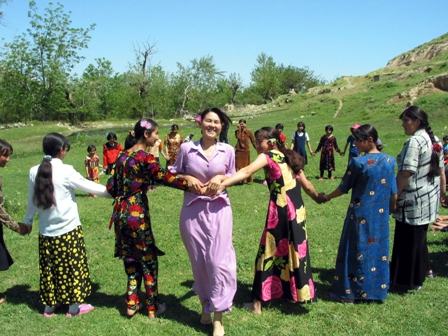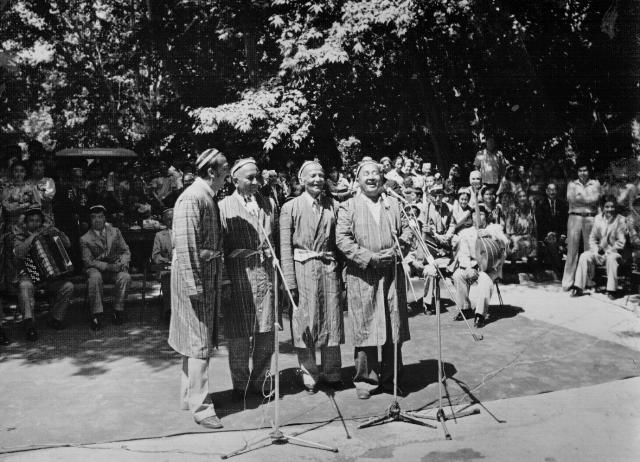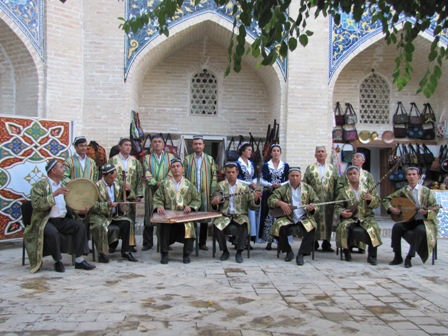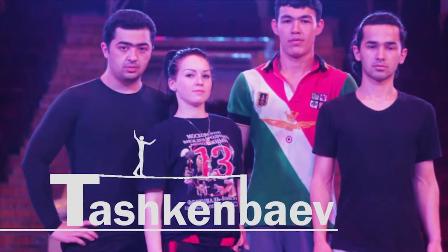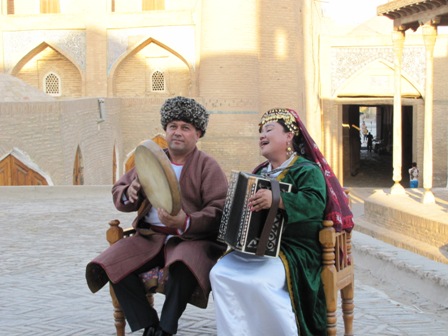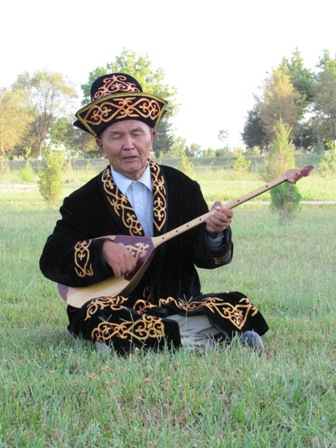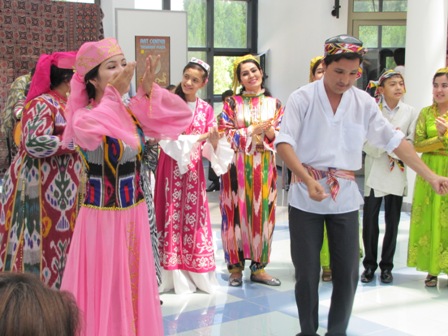About the Website
Welcome to the website of intangible cultural heritage of Uzbekistan!
Intangible cultural heritage of Uzbekistan is represented by the practices, representations, expressions, knowledge, skills, instruments, objects, artifacts and cultural spaces.
Intangible cultural heritage is manifested in such domains as oral traditions and expressions, performing arts, social practices, rituals and festive events, knowledge and practices concerning nature and the universe and traditional craftsmanship.
Traditional folk culture stands at the core of the whole diversity of directions, types and forms of culture of the contemporary society. It is in the folk culture that human's views about universe emerge, system of language, beliefs as well as knowledge and skills get shaped, traditions, festive-ritual life and folklore get formed. It is thanks to traditions that the experience of practical activity of human community gets consolidated and norms of social relationship (family, intra-community and labor relations) get regulated.
Speaking about intangible cultural heritage, it is possible to distinguish 5 domains, in which different elements manifest themselves. These are the following:
1. Oral traditions and expressions, which include all genres associated with oral folk creativity. Oral traditions, which are transmitted orally from generation to generation or created and practiced by people, consist of such elements as myths, legends, dastans, tales, stories, fables, proverbs, lullabies, tongue-twisters, lapars, khalfas.
Forms of oral tradition differ from each other with their manner of performance and diversity of melodies. For instance, doston is performed with accompaniment of dombira, qobuz, dutar or in a narrative way; tale is the genre in which, under the impact of performance skill of narrator, tale's hero has educational impact on listener; stories, which are transmitted by word of mouth, are narrations about triumph of good over evil; fables are amplifying means for uniting different themes among conversation partners; lapars are performances of folk songs accompanied with dances; yalla is performance of dance in accordance with music piece, performed by singer; khalfa is performance by woman, who has creative or improvisatory skills, of certain compositions under accompaniment of accordion.
It bears mentioning that khalfa genre is developed in Khoresm region, whereas yalla and lapar are typical for Tashkent and Ferghana regions and mavrigi – for Bukhara region.
2. Performing arts unite such genres of folk creativity as music, dance and shows (spectacular arts). Music genre unites such elements as "Shashmaqom", "Khoresm maqoms", "Tashkent-Ferghana maqoms", "Tanovar", "Ushshoq", "Feruz", "Suvora", "Lazgi", "Mavrigi", lullabies, olans, yallas, lapars, madhiya, termas and khalfas.
Dancing genre unites peculiar methods of national dance as well as folk dances, which are typical for certain areas. These include solo dance, group dance, women's dance, men's dance, Khoresm dance, Bukhara dance, Ferghana dance, Surkhon dance, etc.
Spectacular arts genre comprise of rope-walking art, strongmen's art, traditional circus, illusionists' art, puppetry, folk games, etc.
3. Social practices, rituals and festive events are usually national rites, customs and traditions and festivities, which are typical for certain area or region within the country. These include traditions of hospitality, family rituals, wedding ceremonies, rites, customs, rituals associated with upbringing of children, promenades organized locally and nationally, shows, festive events, certain festivities which came down to us and which are applicable for modern days and have an educational impact on young people.
4. Knowledge and practices concerning nature and the universe include certain knowledge and skills which ensure that people live in harmony with nature and universe. These may include the following: predictions for the next day made by the end of the day; weather-forecast for the next month based on the position of the moon; foretelling future events by observing the behavior of animals; identifying the place for future well or house; traditional knowledge and skills associated with certain professions (hairdresser's art, traditional quackery, architecture, etc.); methods of preparation of different meals (tandir kebab, gilmindi, chopchima, basturma, chopancha, khidjan and other types of meals, peculiar for this or that area).
5. Traditional craftsmanship includes the following: knife-making, handicrafts, timber-work, making items from copper and iron, skullcap embroidery, gold embroidery, metal engraving, ganch carving, carpet weaving, majolica art, etc.
More detailed information about these five domains with corresponding elements as well as any other information you will be able to find on the pages of our portal.
We do hope that the website will be an invaluable source in your quest for answers to the questions concerning intangible cultural heritage of Uzbekistan and you will be able to get the latest news about cultural life in our country.
So, welcome to the world of intangible cultural heritage of Uzbekistan!





